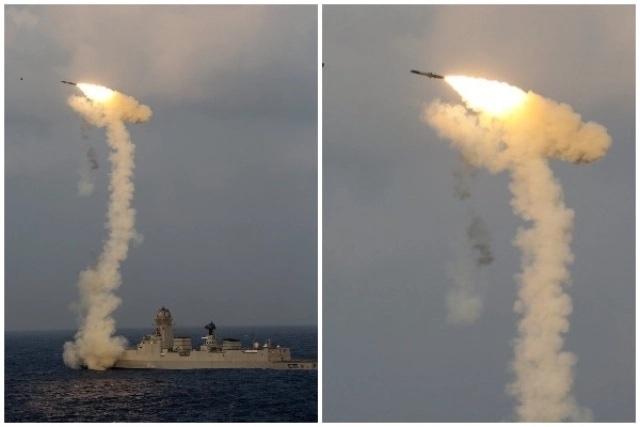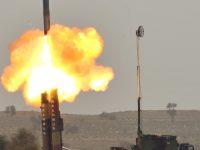India’s Act east Policy will get a boost when another export order for shore based anti-ship variant of the BrahMos supersonic cruise missile by year end is Inked. Talks with Indonesia are in advanced stage for the export of the Indo-Russian BrahMos supersonic cruise missile. The deal could have been signed earlier, however, due to internal matters of that country, by year end, or early next year the deal is expected to be sealed. Indonesia will become the second Asean member country after the Philippines to import missiles from India. FinancialExpress reported that Indonesia was among the other countries in the region to have expressed interest in the BrahMos Missile.
The BrahMos (also designated as PJ-10) is a medium-range stealth ramjet supersonic cruise missile that can be launched from submarine, ships, aircraft or land, notably being the fastest supersonic cruise missile in the world. It is a joint-venture between the Indian Defence Research and Development Organisation (DRDO) and the Russian Federation’s NPO Mashinostroyeniya, who together have formed BrahMos Aerospace. It is based on the Russian P-800 Oniks supersonic anti-ship cruise missile. The name BrahMos is a portmanteau formed from the names of two rivers, the Brahmaputra of India and the Moskva of Russia. Its propulsion is based on the Russian missile, and missile guidance has been developed by BrahMos Aerospace.

BrahMos claims it has the capability of attacking surface targets by flying as low as five metres in altitude and the maximum altitude it can fly is 15,000 metres. It has a diameter of 70 cm and a wingspan of 1.7 m. It can gain a speed of Mach 3.5, and has a maximum range of 650 km. The ship-launched and land-based missiles can carry a 200 kg warhead, whereas the aircraft-launched variant (BrahMos A) can carry a 300 kg warhead. It has a two-stage propulsion system, with a solid-propellant rocket for initial acceleration and a liquid-fuelled ramjet responsible for sustained supersonic cruise. Air-breathing ramjet propulsion is much more fuel-efficient than rocket propulsion, giving the BrahMos a longer range than a pure rocket-powered missile would achieve.
BrahMos Aerospace has said that several Southeast Asian and Latin American countries have expressed interest in the system, with particular interest in naval and coastal defense versions. These countries are Brazil, Brunei, Chile, Indonesia, Egypt, Malaysia, Oman, South Africa, Venezuela, and Vietnam. The intergovernmental agreement between India and Russia to develop the BrahMos stipulates that both countries would have to approve an export sale. China is one of the main nations that has objections about its neighbours getting these missiles for their navies. It views the selling of these missiles as an act of belligerence and interference in the disputed territories like the South China Sea.
